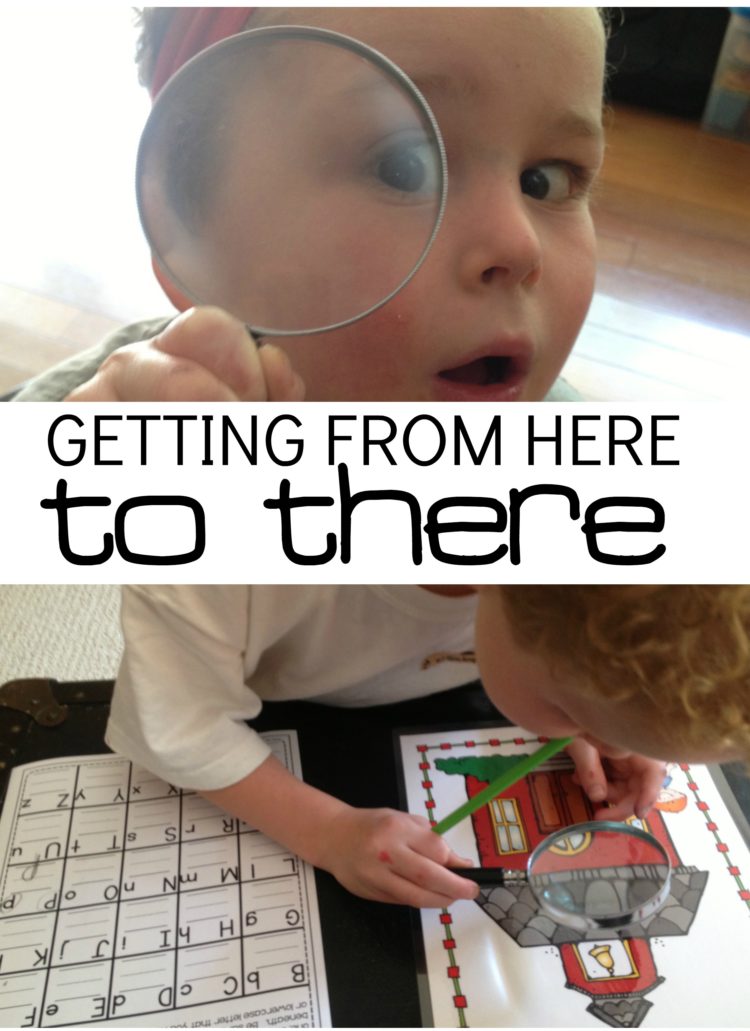
| Get them from playing and exploring with materials (HERE) to using those same materials in meaningful ways during center/station time (THERE). |
Ok so what do those first two weeks ‘LOOK’ like? I’m going to show you. But before I do remember, the goal is to learn routines and procedures and to let them explore and become independent. That being said, I have 6 stations going at one time. This year I have a student teacher at the beginning of the year so I will have two ‘Teacher Led’ or ‘Meet the Teacher’ stations within those 6. Those first couple of weeks of school, I’m not doing guided reading. Those teacher led stations are for introducing materials and activities and stepping back as quickly as possible to see where they need assistance and guidance. In this schedule, you will see there are stations I labeled as ‘exploring’ meaning there really isn’t any instruction other than ‘explore,’ and there are stations that are labeled as ‘independent.’ Independent stations are the ones that have already been introduced by a teacher and that should be familiar to students. Will they be perfect? No, but you re-address issues during your post station whole group meeting. It will get better. Trust me.So take a quick look and see how I have them set up:
This is week one.
If you want to download these so you can take a better look at them, go ahead. I put them on a google doc. I know some of you are looking at this schedule and saying…’where’s read to self.’ We work on read to self as a whole group until they are able to do it for 15 minutes. Once they build their stamina up to that point, I move it into my station rotation. Also please note, these are the activities and stations that I am going to be using in my class so I like to have my students become familiar with them as quickly as possible so that when they change thematically or seasonally, they are familiar with the materials and procedures. You don’t have to use these activities. These are just what I like. You may have completely different ideas and activities and that is perfectly OK. I just want to give a little visual of the Back to School Stations I will be using so you can see what some of these activities might look like as your students explore and then as they transition into independent, meaningful work. So here’s a little tour…
Exploring Bingo Dotter Work
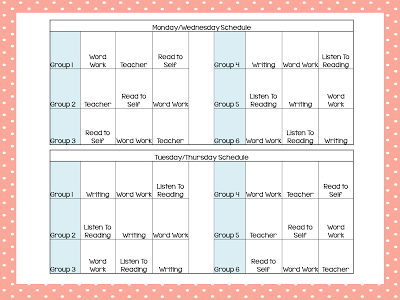
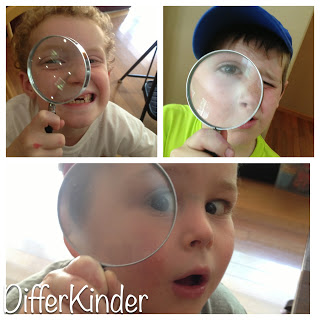
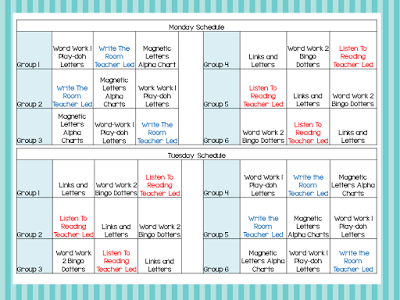
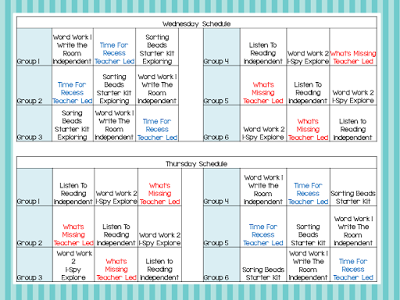



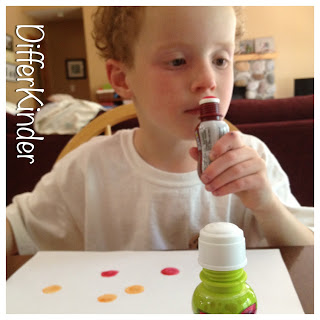
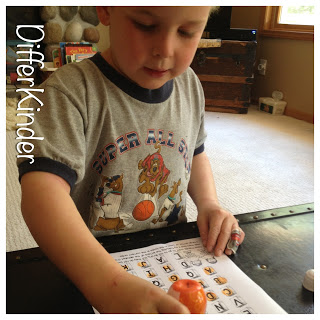
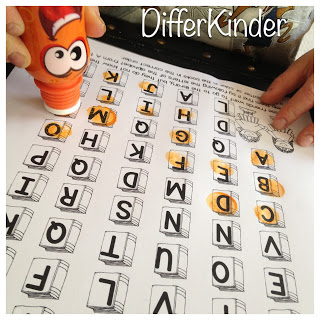
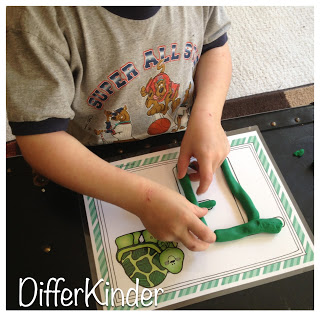

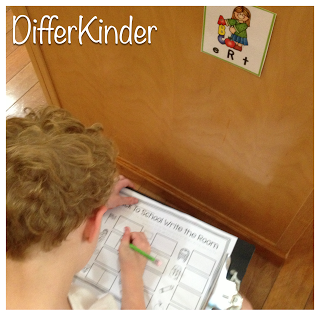
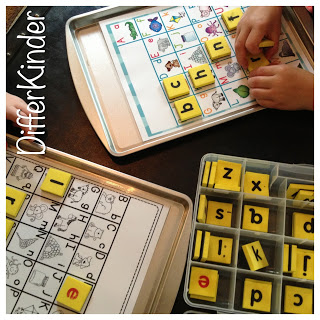



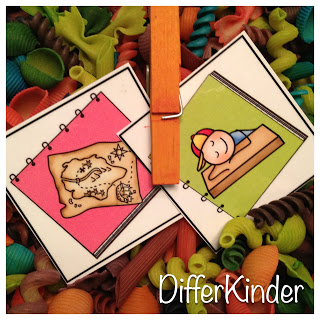
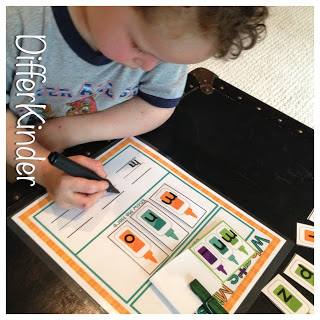
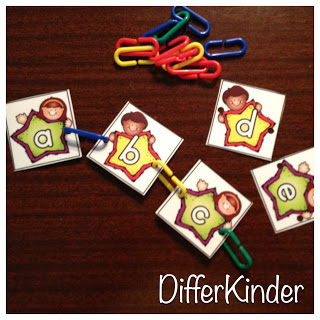

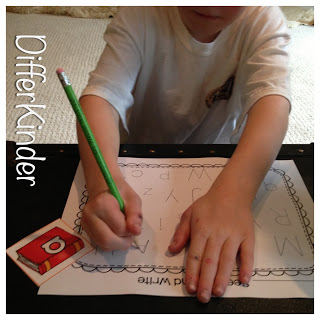


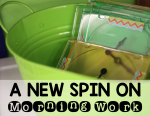



Thank you so much for this post! I am a second year teacher, but since I was hired three weeks into school last year, I have a little bit of anxiety about those first few days and how I am going to get my centers organized. I can’t wait to read more!
I’m hoping this helps Allyson. Stay tuned for follow up posts.
Marsha
Great ideas! Thanks for sharing.
Thanks Bobette
Marsha
Love your ideas. I love Daily 5..however I have been doing it with Middle Schoolers..this year will be my first to use it with 1st and 2nd grade Special needs children. I like your set up.
Thanks for sharing.
Debbie 🙂
Wow! It will be different for you for sure, but I’m sure it will still be great for 1st and 2nd graders too.
Marsha
Thank you so much for sharing. This will be my first year of using Daily 5 (30th year teaching K). I am very excited to begin this journey and appreciate you sharing your experiences.
Wow! Good for you for trying something new. Way to go.
Marsha
Thank you so much for sharing. This will be my first year of using Daily 5 (30th year teaching K). I am very excited to begin this journey and appreciate you sharing your experiences.
Another wonderful post! The more I read your blog and how you differentiate the more I fall in love with your teaching style and wisdom. I do many of the same things. I start slow. In the beginning, I have many of my stations focus on fine motor skills as well. Depending on the class, gradual release and choice is embedded at different points of the year.
Absolutely Sylvia…I love the gradual release term. That is exactly what you need to do.
Marsha
A quick question… if you are working with groups the first few weeks when do you do you initial assessment of students?
I do a ton on the fly. I always have a clipboard handy. I also do some during their 20 minute rest time after lunch and I assess when I’m introducing a station or activity.
Marsha
Hmmmm unfortunately I have half day kinder. I may have my team teacher doing assessment during our 40 minutes of teaming time and then do the rest during rti
Thank you for your post. I printed it out using “Clearly” (an app available in the Google store). I believe this is going to be a tremendous help to me as I embark on my new journey.
How do you introduce these centers at the very beginning? I find that when I introduce whole group all the centers at the beginning of the week, they are too overwhelmed. If I introduce them small group, what are the rest of the kids doing while you get all the small groups rotated through to intro the centers?
If you look at the small group stations that are unmanned by a teacher…they are exploratory in nature. For instance, here is some play-doh explore and by the way there are some mats there if you are interested. They really don’t need much explantion. I don’t have any expectations for them until I introduce that station in small group. By the end of the first week, I will have four stations I have introduced as a small group that now become and ‘independent ‘ station…after two weeks I have 8 stations that will have been introduced. Does that make sense?
Marsha
Absolutely! Thanks for the explanation. I’m way over-thinking it as usual….. lol
Love this post! I can’t wait to see the follow up posts! How do the kids know where to go on the second day? Do you have a chart or some kind of visual showing where they go for the last 3 stations? Thanks!
Christy
Yes, I’ll be following up to show my task board. I thought it would be too much for one post.
Marsha
Ok thanks!!
Do you have the worksheets posted above on TPT or another store? I love them and would love to use them .
Yes, if you click on the pictures above they are linked back to my store.
Marsha
I just have a quick question on how you would set it up for a 5 day a week program? I am sure that I am just over thinking it, but I am struggling with that. I just moved to Kindergarten after 7 years in Pre K and have fallen in love with your blog and tpt store. You have been a great inspiration to me for the year ahead. Thanks.
Dawn
You could set it up the same way, but your third cycle of the week would fall on a Friday and Monday. It would then go Tuesday/Wednesday and then Thursday/Friday. At the end of the first two weeks you would have introduced 2 stations every two days for a total of 10 new stations. It would work.
Marsha
This post read my mind – I have been struggling with planning my literacy centers and figuring out how to introduce them in the beginning. I participated in the guided reading book study this summer, but I still felt stuck. This was such a timely post and I will be stalking the future related posts. Off to do a little planning now!
Great post, Marsha! Perfect timing, as I have downloaded, printed and laminated and now ready to put them in the right places at the right time. This was a good visual for Chapter 1 in Jan Richardson’s gook!
Thank you!! I always wondered how to put read to self in a center when they hadn’t built up stamina yet! This really explained it to me!! I just really want an art center in there somewhere! How do you do art projects related to letters, sounds, or comprehension/read-alouds?
Oh, I have what I call ‘learning centers’ three to four times a week. These are stations like housekeeping, art, computers, block play, but I also include centers that are differentiated (math, writing, word work, reading . . .). They tend to be more exploratory in nature because I still really believe in the need for kinders to have access to those developmentally appropriate activities. Even the block play and house keeping has an academic component, but it’s a little looser.
Hope that explains it a bit more.
Marsha
This is a great post that I will be sharing with my K friends! I too find that coming back to the carpet after every round takes a lot of time. Each round students have many choices (ex. how to practice their personal spelling words, what to read with their friend (read to someone), etc.). I find that this works best for me.
Primary Classrooms are Oceans of Fun
Another great post! Always recommend your blog to other K teachers.
Awww thanks Emilie. I really appreciate that.
Marsha
Quick question…we are starting readers workshop this year so I am a complete newbie 🙂 We were told (in a sense) to do workshop 5 days a week. I’m curious since you do it 4 days a week…what do you focus on or do on Fridays? Thanks for your great posts!!
Hi Marsha – I really appreciate your detailed posts about Daily 5. your classroom looks like a great environment for learning! I am also curious what you do on the Fridays 🙂
Thanks for sharing!
Jessica
Thanks Marsha! My teammate and I have never used D5 before and are really anxious to learn as much as we can about introducing it into our kinder classrooms this year. Can’t wait to read more about it, your posts are always so helpful and inspiring!
~Jessica
Fun in PreK-1 & Kinder
P.S. Will your next post include a look at your daily schedule? And do you use a rotations chart? Thanks!
I am so excited! I always look at daily 5 and then get too nervous to start it. Ive downloaded your back to school centers and need to laminate them. Thank you for all your resources! I see that you have 20 minute centers. How many minutes do you start out with before you get to the 20 minutes?
It depends on the class, usually about 8-10 minutes that first week. It takes just as long because you take more time transitioning, but the center time itself is not as long until they are able to clean up and move a little quicker.
Great question.
Marsha
Marsha,
Thanks for your detailed description on how to implement D5. This is my 12th year but my first trying the Daily 5 and have been worried about how to do it exactly. This is perfect. I can’t wait for your next post!
~Lucy
My best advice as with anything is to make it work for you and your class size and your students. Every year is not the same. Be willing to tweek it here and there to fit what you need. I couldn’t do 5 stations a day. It just didn’t fit in my schedule so this works out great for me.
Marsha
Would you consider posting your wonderful pdf in Word so it is editable? I do so many choices that you do, but I would like to add some of my own. Thanks for considering! What a wonderful tool!
This is just what I needed! I am so looking forward to your follow up posts. I have a variety of several things/materials in my classroom (including some of your great items) to use in Stations/Centers; but I always struggle with many of the same issues that some of the teachers commented above about, such as introducing stations/centers, rotations, management, etc. I have many of the same questions as above, and I tend to ‘over think’ things as well. I prob will have questions along the way, and I hope you don’t mind me asking. Thank you again for sharing your wisdom and I am excited and ready to learn more about Literacy Stations/Centers. Pam — pks0221@suddenlink.net
This post came at the perfect time! Thank you so much. I am starting Daily Five this year and I am a bit nervous. I am also having a hard time letting go of some of my stations but this helped me understand how I can fit it all in. I read The Next Step in Guided Reading by Jan Richardson. It was a great book but I feel your blog help clarify some things. I will be waiting and ready for the next blog! Thanks again for sharing! Prudence
Prudence, I’m happy I could help put it together.
Marsha
You are really good at taking away the anxiety of starting Daily 5. I think so many teachers stress about doing exactly as the Daily 5 books says, knowing it doesn’t always go as planned, and then giving up. This post relieves the pressure and reassures me that I am correct in my thinking, DO WHAT WORKS for me!! Thank you for a fresh breath and a new motivation to keep trudging along!! Just under 3 weeks and my lil darlings will be at my door 😉
Thank you for some great centers for back to school! I also do 6 centers to make the groups smaller. Last year was my first in K and I loved it. I can’t wait to go to school and print & laminate your wonderful ideas.
Thank you for this post. Last year I focused on math stations and yours was a life saver! This year I am focusing on literacy centers and plan on taking lots of time to explore and practice before expecting them to run smoothly.
It’s my first year teaching K. I’ve taught 6 years between 2nd-5th as a special educ. team teacher or just straight out intervention. I use to be an Art teacher, so K is very appealing to me. I’m beyond excited and ‘slightly’ nervous how to plan for it and the basic logistics. Marsha, I would love to see how your whole day looks. I have to do Fundations at my school, but I’m also going to attempt Daily 5. I used it in the upper grades. I might have a paraprofessional or a student teacher, so if you will continue to give suggestions for them or a parent volunteer. It’s overwhelming all the parts to consider. Thank you so much for your post, it defiantly stokes my teacher passions!!
You’ll get there. Just take some baby steps, step back and evaluate, adjust and keep working on it. I tweak things and change things ALL the time. Check in and let me know how it goes.
Marsha
Marsha,
I loved reading this post! Your information will help tons of teachers who are starting D5 or LWS this year, such as myself. I look forward to reading the rest of your posts on this topic. Thanks so much!
Lori
Teaching With Love and Laughter
luvyorkies@gmail.com
I love that teachers like you share these wonderful and detailed posts with everyone! It is so helpful to see how others do things. This is my 4th year teaching kindergarten and each year feels just as new for me still. I have to sit back and think about what worked and what I need to do differently. So thanks for all the wonderful ideas!! 🙂
Thank you so much for going in depth about how you manage your classroom. It really helps first year teachers like myself. I’m doing a mix of math and literacy stations during my afternoon block after specials. I’m having trouble deciding how I’ll manage it. I’ll have groups of 2 to 3 kids( about 23 kids) that will do two stations in the 30-40 minute block. Do you have an actual timer set to rotate? What about the kids that work through too quickly, and have time to spare until the next rotation? I’m not sure exactly how to manage that yet. Any suggestions? Thank you for all your wonderful ideas. My hope is to be as good of a teacher as your someday. Your students are lucky!!
as you are someday** Trying to type on a phone = typos
Hello
Please would you be able to email me a copy of your plans as a word document as google doc only lets me access it as an image. ( aliranson@talktalk.net) It is my first year teaching Reception ( Kindergarten in England) and it is a mixed age class with the year one and two children in a small village school. So this would be a great way of organising the differentiation that is needed. Thank you very much for all the great ideas and advice. Best wishes Ali
This comment has been removed by the author.
Oh yeah! I figured out how to comment! Thank you so much for all this wonderful, helpful information. I can’t wait for more information. I am going to need all the help I can get changing districts and feeling like a first year teacher again. I need to study your schedule and figure out mine with 5 rotations. I would like to know how you start all this on the first day of school? Do you think you might do a back to school bundle with math and literacy?
Oh I LOVE every piece of this post…but that little guy of yours is the BEST!!! You are an AMAZING teacher and Mommy!!!
Thank you so much Marsha!!! I began literacy centers last year but not until October so the kiddos did great! I was nervous about how to start them Day 1!!! You are so helpful!!!!
Sarah
Kindergarten Korner
I am SOOOO glad I found your blog today!!! This is exactly what I have been looking for! I am going back to Kindergarten after 8 years in 1st grade. I loved doing Daily 5 in 1st grade, but when I talked to the K teachers, they didn’t start it until January when we are taking real reading groups. I couldn’t wrap my head around not starting D5 right away! You have just allowed me to breath a sigh of relief that it can be done in Kindergarten right from the start 🙂 I look forward to the followup posts!
Aimee Farrell
http://www.mykindergartendream.blogspot.com
Hi! This is off-topic, but I wanted to let you know that I blogged today about how successful my class was with your Shoe Sheriff motivating pack and I wanted you to see the post. Thank you for such an amazing freebie! I have never found anything so wonderful for shoe tying!
Post: http://forever1stgrade.blogspot.com/2013/08/lets-get-those-shoes-tied.html
Lindsey at Forever First Grade
Awesome post… looking forward to hearing more!!
Marsha,
Your site is my sure fire go to for differentiation in my classroom. This summer was to sharpen my craft and you have provided so much for me to make that happen. Thank you for your willingness to share.
This comment has been removed by the author.
Looking forward to finding he next part in is process. Thanks for your clear, workable strategies.
Julie
Mrs Stowe’s Kinder Cottage
I agree with not pulling students out of their other rotations for reading groups. I use these cards which allows me to write their reading group number with a sharpie and the students to make choices for the other five rotations using a dry erase marker. this way the students choices can be wiped off with a baby wipe at the end of the day and the reading rotation will not erase. http://www.teacherspayteachers.com/Product/Daily-5-Rotation-Choice-Cards-1142391#
You’re so strategic! 🙂 Seriously, I love you! I don’t know why I hadn’t thought of teaching the how to’s of centers/Daily 5 routines in the small group before. Its can be so not fun or productive whole group and kindergarten is supposed to be fun, right? I am so excited! Thank you.. you’re brilliant 🙂
Hi, Marsha! I just bought your Back to School Word Work Galore! All of your posts on Daily 5 are very beneficial for me. I want to start doing my literacy centers this way and being only into my 2nd year of kindergarten, your suggestions help me a lot. I went to a Georgia DOE ELA conference this week and I am “sold” on Daily 5 and I see all of the benefits of the program and I’m ready to try it out. I know these posts are from a year ago, but I’m very thankful that I found them. Thanks again!! Linda Groce 🙂
This is amazing!! I just got moved from 1st Grade to Kinder and have been so anxious about where to begin with Daily 5. Cannot wait to try this! Thanks for sharing!
Marsha, I am glad that I found your posts again as they are very helpful in getting my mind back on school and stations. I was wondering about your first 2 weeks stations. There are two teacher led stations going on at the same time, was this done with your student teacher being in the room? Also have you ever done two teacher led stations at the same time without an extra person? Thanks!:)
Kinders on the Block
Thank you. First Year Kinder teacher and your guidance is affirming –
Hi Marsha,
I was just wondering how you keep building stamina for reading once you add read to self into your rotation? I tried to do stations while I called group in Kindergarten, which didn’t go too well because my year did not start off right (made all the first year teacher mistakes), but one thing I did not like when doing rotations was that it limited how long my students read to self or someone. Any suggestions for this, or do you feel 20 minutes is long enough? I know that the “sisters” say they can have their kinders reading up to 30 minutes by the end of the year or longer, and I was just wondering what your thoughts were on that? I will say that with common core there is a very strong push for academics, and that as is reading for 20 minutes is an awful lot for these little friends, but I know on the flip side of that they will need to read for extended periods in the upper grades, and wanted to prepare them for that. I had great success in my reading group (super smart little ones, some of them moved 7 reading levels!!!!), but wished I could have dedicated more on task time for building reading stamina and letting them go as long as they could have.
Online Movies
Hollywood Movies
Bollywood Movies
Online Friendships
Punjabi Movies Online
Softwares and Games
Tips N Tricks
Online Movies
Android Games
FB Tips n Tricks
I forgot to add I have a few questions! I am a first year teacher and I really want to implement this in my room!
1) how did you build up to the stamina of read to self or stamina when that was a different station?
2) What do you do for the Meet the Teach section since you have two of those stations going at a time?
3) How many students to a group?
4) How long did you have your students working in a station in the beginning of the year?
5) How could this be tweaked for a 5 day school week?
Thanks so much!
oooo lots of questions! Let’s see. . . if you search ‘building stamina’ on my search widget to the right, you’ll find a post about building stamina. Meet the teach is basically ‘guided reading.’ At the beginning of the year though, it’s learning stations and activities before letting those activities be independent, so I have one other adult manning a second ‘meet the teach’ for those first couple of weeks. The number in each group depends on the number of students I have each year. I have 6 Daily 6 stations going at one time, so I like to have no more than 5 to a group, but 4 is ideal. At the beginning of the year, just like with read to self, you have to build stamina. We start out at about 8-10 minutes each rotation and move up to 20 minutes. I am sure it could be tweeked to 5 days a week. I chose to do it 4 because of specials and wanting to build in other ‘special’ activities.
Hope this helps.
Marsha
Marsha,
Are students within each group at the same level? I thought you had mentioned that they were not so I am wondering how you do guided reading when they come to Meet the Teach.
Thank you for all the information you have shared. It is VERY helpful!
Ami
Not necessarily. I tend to group them flexibly. I like to have different levels together and as long as they have a partner, it works. When they come to guided reading they are often not on the same level of sight words, but may need to be working on the same kind of skill.
Marsha
Thank you so much for some of your ideas. I like how you explain your centers & how you have samples!
Oh thank you. You are very kind. I am glad you enjoy it.
Marsha
Hi and thanks for sharing. I have been teaching K for 4 years and Stations gives me the most anxiety. I am the one you mentioned earlier abut giving my kids choices on their station, but this year it wasnt working for me. I have always wanted to try a daily 5 but never knew how it was suppose to look OR how to run it ( I sometimes over think things, but I want the biggest bang out of this time) With that being said, this is the first post where I feel that I understand it and I think I could try it! Thanks for sharing!
Thanks for sharing this. You made my day. And let me know if you have any questions. I’m happy to help.
Marsha
Hi, Marsha. I have bought and use your materials often. Thank you for all you do.
Where do you find the scented bingo dotters? Not having much luck. I did find one store online – Discount School Supply, but that’s it.
Thanks, Chrissy DelliCompagni
You know, I have contacted Scentos about getting more, and I just don’t think they make them anymore. I would love to get some more myself.
Marsha
Hi Marsha, So I did Daily 5 last year and I loved it, but did have some issues. One big one was I had kids that wanted to sit too close together and either talk or just make faces at each other, and also a few kids that would NOT stay in one spot. We practiced and practiced stamina and reviewed Daily 5 expectations every day and I still had those issues. Any tips or advice on helping with chatting and moving students? I thought about placing some kind of tape or decal on the floor or chairs they can sit in so those are only the spots they are allowed to choose and they have to stay on that spot? What do you do?
I use Sit Spots religiously. When it’s time to ‘read to self’ they sit on a certain color. That way they are spread out. I do a lot of floor work so my kiddos get used to working next to each other and we have to practice not bothering someone else even if it’s a really really good part of the book. It take practice but we also have to give them the support they need to be successful. Some students need an assigned spot and that’s ok if that’s what keeps them successful. I would definitely give Sit Spots a try though. It’s SitSpots.com and tell Joyce I sent you! 🙂
Marsha
Those are just what I had in mind. Thank you!!
What do you on Fridays?
Because of the way my specials shake out, I have never done Daily 5 on Friday, unless I need to make up a day missed because of a snow day or late start. I love having that cushion so that I can make up time then. I just add extra time in the middle of the week for literacy to make up the time I would have scheduled for Friday, and I use my Fridays for science activities, math stations, writers workshop and language development through show and tell.
Marsha
I love the idea of letting them explore the materials first, and then learn how to use them in an activity second. I will be doing this next year, assuming I’m teaching Foundation(prep/kindergarten) again.